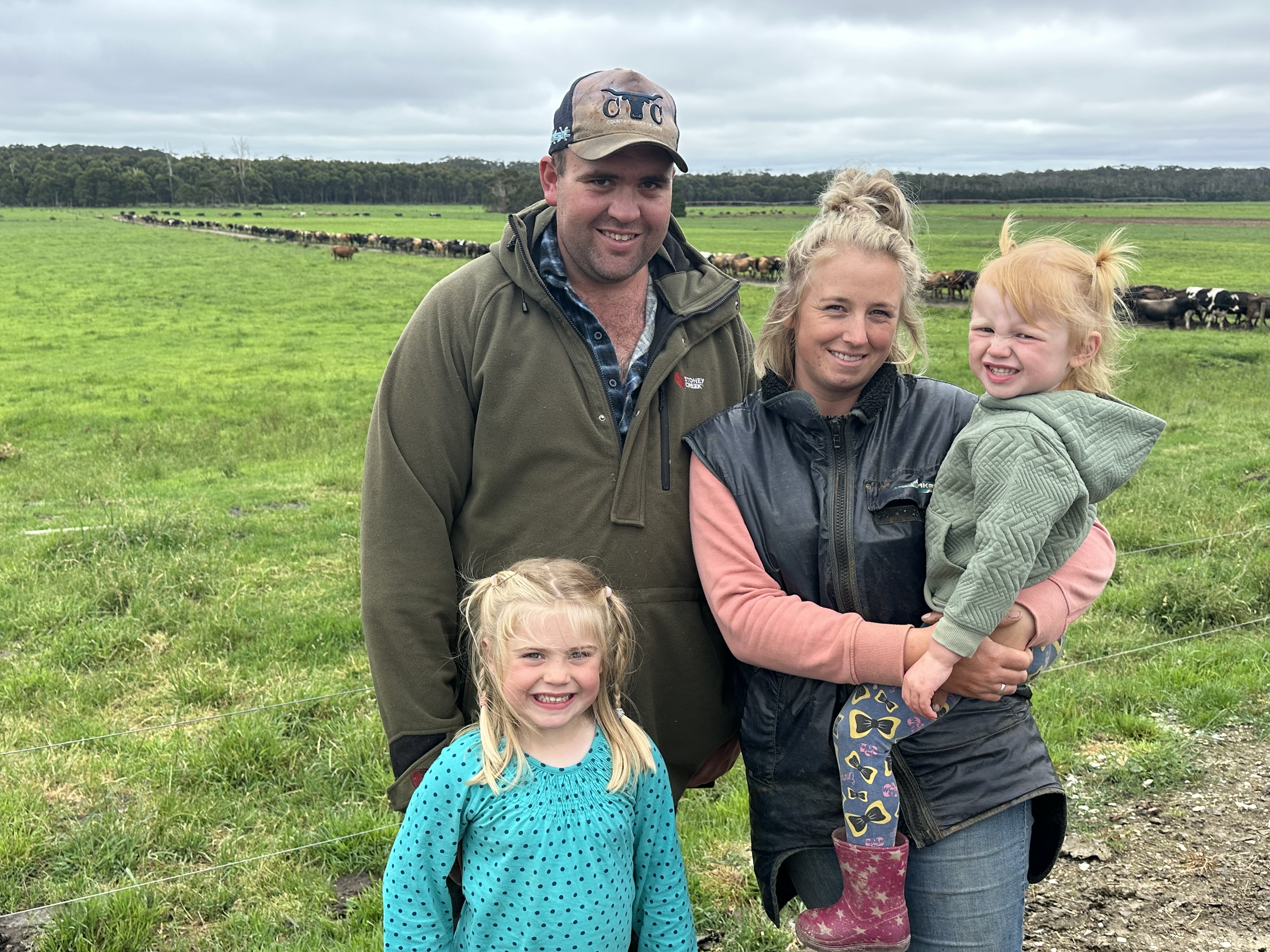All smiles as milk quality is rewarded

WINNING a milk quality award has seen one farming couple in the state’s North-West achieve a long-term goal.
Ryan and Brighid Langley, who farm at Redpa, were recently named as one of the gold medal winners in the Dairy Australia annual milk quality awards.
The gold awards are presented to farmers who manage to achieve excellent results for their bulk cell count.
The award places recipients in the top 10 per cent of farms across the country.
The Langleys run a 50/50 share farming operation with Circular Head Farms.
Mr Langley started his career in dairying as an apprentice working at the Elliot Research Farm.
He then worked as a farm hand before the couple started share farming at Riana.
This will be their fourth season with Circular Head Farms and they recently started a 50/50 agreement after purchasing the herd.
Mr Langley said the family’s aim was eventually farm ownership, so they were grateful for the opportunity to work their way up through share farming. They are currently milking 517 cows on the 157ha farm.

The property has limited irrigation, so Mr Langley said they had to budget feed carefully to maintain production, especially during dry conditions.
"About 50 per cent of the farm is a big hill and the other 50 per cent is pretty flat so it does tend to dry off pretty quickly,” Mr Langley said.
They buy in silage to supplement a small amount made on farm.
Their herd is predominately comprised of crossbreds but also includes about 70 purebred Jerseys.
The Jerseys are part of the couple’s Brylan Jersey stud. “We’re just going through genetic recovery on the others to fast track their registration a bit,” Mrs Langley said.
Mr Langley said the couple were very happy to have been recognized with the national milk-quality award.
“I’ve wanted to win one for a while,” Mr Langley said.
While the couple say they are using standard management practices across the herd, Mrs Langley said getting to know the property better had probably also been a factor in reducing cell counts.
“Now that we’ve learnt to farm and the problem areas and times we’re probably a bit more vigilant,” she said.
Mr Langley said they were also lucky their herd had generally recorded lower cell counts to begin with.
They have also recently installed milk-line filters for mastitis detection.
Mr Langley said this move probably helped them to identify cows with potential mastitis issues earlier.
“We are a one-man shed, so in theory we do the things you’re not supposed to for low cell count like use dogs too,” he said.


Add new comment